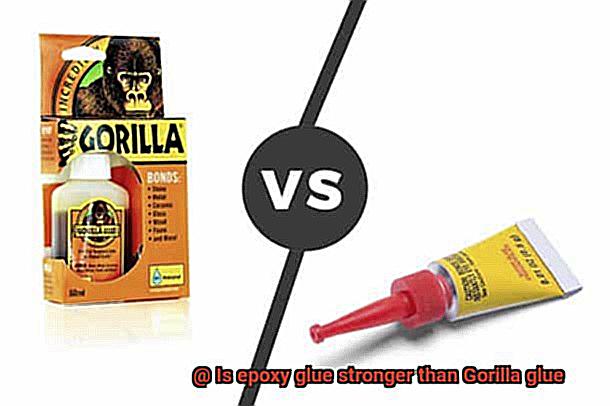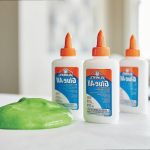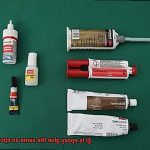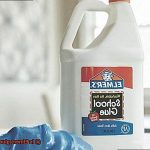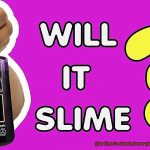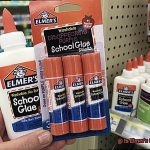Do you often find yourself in a sticky situation, trying to fix a broken object with an adhesive that just won’t hold up? Or maybe you’re a DIY enthusiast who wants to ensure their projects are built to last. Either way, you’ve probably heard of epoxy glue and Gorilla glue – two of the most popular adhesives on the market today. But which one is stronger?
If you’ve been wondering about this question, then look no further because we’re about to dive deep into the world of adhesives. In this blog post, we’ll explore the differences between epoxy glue and Gorilla glue and help you determine which one reigns supreme in terms of strength and durability.
We’ll get down to the nitty-gritty science behind these two adhesives and break down their strengths and weaknesses. We’ll also consider various scenarios where one adhesive may be better suited over the other – such as temperature and environmental factors.
By the end of this post, you’ll have all the information you need to make an informed decision on which adhesive is best for your specific needs. So sit tight and prepare to uncover the answer to one of the most debated questions in the DIY world: Is epoxy glue stronger than Gorilla glue?
Types of Glues
Contents
When it comes to glues, there are countless types available in the market. Each type of glue has its own unique properties that make them suitable for different applications. Let’s take a closer look at five commonly used types of glues and their unique characteristics.
Epoxy glue
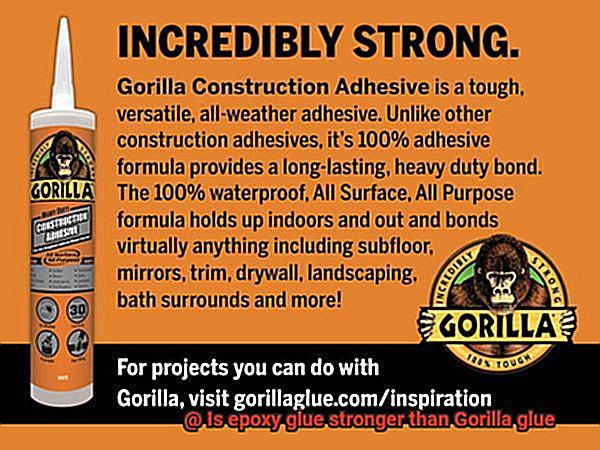
This two-part adhesive is known for its strength and durability. Epoxy glue consists of a resin and hardener that are mixed together before application. Once mixed, the epoxy glue forms a strong bond that can withstand heavy loads and extreme temperatures. It is ideal for bonding materials such as metal, wood, ceramic, and plastic.
Gorilla glue
This polyurethane-based adhesive is also known for its superior bonding strength. Gorilla glue expands as it dries, which allows it to fill gaps and create a strong bond between surfaces. It is waterproof and can bond to almost any surface, making it ideal for outdoor use.
Super glue
Also known as cyanoacrylate adhesive, super glue is a fast-drying adhesive that forms an instant bond between surfaces. It works best on non-porous surfaces such as metal, plastic, and glass. Super glue is perfect for small repairs and can bond to a variety of surfaces quickly.
PVA glue
This water-based adhesive is commonly used in woodworking and crafting projects. PVA glue dries clear and can be sanded or painted over once it dries. It works best on porous surfaces such as wood, paper, and fabric.
Contact cement
This rubber-based adhesive forms a strong bond between surfaces when they are pressed together. Contact cement is often used in construction projects and can bond materials such as wood, metal, and plastic.
Overall, choosing the right type of glue depends on the specific application and materials being bonded. Epoxy glue is known for its superior bonding strength, but Gorilla glue expands as it dries and can fill gaps between surfaces. Super glue is perfect for small repairs, while PVA glue is ideal for woodworking and crafting projects. Contact cement is a great choice for construction projects.
In conclusion, understanding the unique properties of each type of glue is essential to selecting the right one for your project. Keep in mind the materials being bonded and the strength requirements of the bond.
Bonding Materials
If you’re about to embark on a DIY project or are a professional builder, selecting the right adhesive is key to ensuring a strong and durable bond. With so many options on the market, it can be challenging to determine which one is the best fit for your specific needs. Two popular adhesives for bonding materials are epoxy glue and Gorilla glue. Each of these adhesives has a unique set of properties and benefits, making them ideal for different applications.
Epoxy glue is like the strong, unbreakable Hulk of adhesives. It’s a two-part adhesive that combines a resin and a hardener to create a powerful chemical bond that can withstand high stress and strain. Epoxy glue is renowned for its versatility in bonding with various materials like metal, wood, plastic, and ceramic. It has an impressive tensile strength that makes it ideal for bonding rigid materials together.
Gorilla glue, on the other hand, is like the versatile Ant-Man of adhesives. As a polyurethane adhesive, it expands as it dries, which allows it to fill gaps effectively and create a tight seal. Gorilla glue has a wide array of applications and can bond with several materials such as wood, metal, ceramic, and foam. It’s perfect for flexible materials or filling gaps because of its ability to expand as it dries.
So how do you determine which adhesive is the best fit for your project? Here are some factors to consider:
- Material Type: If you’re bonding rigid materials together such as metal or ceramics, epoxy glue may be the best option. If you’re bonding flexible materials or filling gaps, Gorilla glue may be more appropriate.
- Flexibility Requirements: If your project requires some flexibility in the bond, Gorilla glue may be the better choice due to its ability to expand as it dries.
- Exposure to Moisture: If your project will be exposed to moisture or outdoor elements, Gorilla glue may be the better option due to its higher resistance to water.
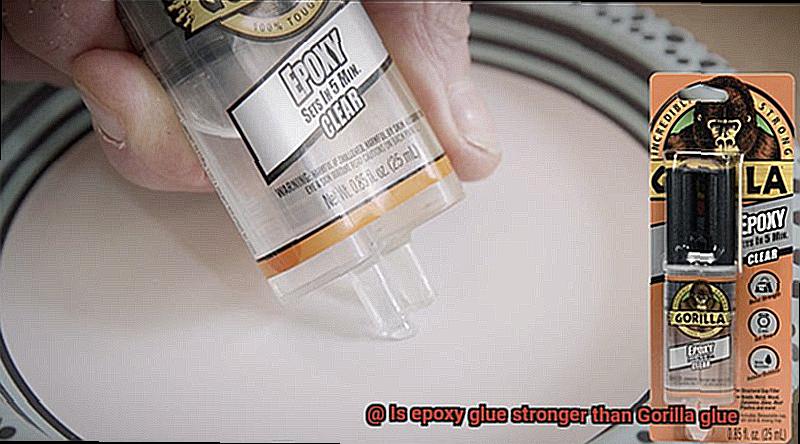
Application Method
When embarking on a DIY project, choosing the right adhesive is just as crucial as selecting the right materials. But did you know that how you apply the adhesive can also impact the strength of the bond? Let’s explore the application methods for two popular adhesives: epoxy and Gorilla glue, and how to ensure the strongest bond possible.
Epoxy glue comes in two separate parts that need to be mixed together before application. Proper mixing is critical, as it activates the adhesive and ensures a strong bond. Follow the manufacturer’s instructions for mixing ratios and thoroughly mix the two parts together. Apply the epoxy to one surface and press the two surfaces together with as much pressure as possible. After application, allow the epoxy to cure for 24 hours before using it in your project. This time-consuming process will yield maximum strength.
Gorilla glue is more convenient, as it’s a one-part adhesive that doesn’t require any mixing. Simply apply it directly from the bottle onto one surface and press the two surfaces together with as much pressure as possible. Unlike epoxy, Gorilla glue only takes 10-20 minutes to set, depending on the materials being bonded. However, applying too much or too little glue can affect the strength of the bond.
It’s essential to note that applying too much or not mixing epoxy properly can weaken the bond. Similarly, not applying enough pressure during curing with either adhesive can lead to weaker bonds. Thus, follow manufacturer’s instructions carefully for best results.
Strength Comparison
When it comes to choosing the right adhesive for your project, strength is a crucial factor to consider. Epoxy glue and Gorilla glue are two popular options, each with its own unique properties that make them ideal for different types of applications. So, how do they compare in terms of strength?
Let’s start with epoxy glue – a two-part adhesive consisting of a resin and hardener. When combined, they create a strong chemical bond that can withstand water, heat, and chemicals. Epoxy glue is versatile, bonding to various surfaces such as wood, metal, ceramics, and plastics. One of its main strengths is its high tensile strength – it can resist pulling forces without breaking.
Gorilla glue, on the other hand, is a polyurethane-based adhesive that forms a strong bond by reacting with moisture in the air. It’s highly effective at bonding porous surfaces like wood and foam but may not be as strong as epoxy when bonding other materials such as metal or ceramics.
While epoxy glue is generally considered stronger than Gorilla glue, the latter is no slouch either. In fact, it has been shown to outperform some types of superglue and other common adhesives. So while epoxy may be the stronger overall option, Gorilla glue is not far behind in terms of sheer strength.
When deciding which one to use, consider your specific needs. If you prioritize strength above all else, epoxy glue may be the better choice. However, if you need to bond porous surfaces or require quick-drying time, Gorilla glue could be the way to go.
Remember always to follow the manufacturer’s instructions carefully for both types of glue and apply as much pressure as possible to ensure a strong bond. To summarize:
Strength comparison:
- Epoxy glue creates a strong chemical bond resistant to water, heat, and chemicals.
- Epoxy can bond with various surfaces such as wood, metal, ceramics, and plastics.
- Epoxy has high tensile strength, meaning it can resist pulling forces without breaking.
- Gorilla glue forms a strong bond by reacting with moisture in the air.
- Gorilla glue is highly effective at bonding porous surfaces like wood and foam.
- Gorilla glue may not be as strong as epoxy when bonding materials such as metal or ceramics.
Advantages of Epoxy Glue
If you’re in search of a versatile adhesive that can tackle any project, look no further than epoxy glue. This popular adhesive has several advantages over Gorilla glue, making it the preferred choice for many individuals.
One of the most significant advantages of epoxy glue is its exceptional bonding strength. This adhesive creates a robust and durable bond that can withstand extreme temperatures and pressures. It’s the perfect solution for heavy-duty applications where a strong bond is essential, such as metal, wood, and plastic bonding.
Another advantage of epoxy glue is its versatility. It can adhere to various surfaces, including smooth, rough, or porous materials. Epoxy glue can even be used as a filler for gaps and cracks. Plus, it can be tinted or painted over once it’s dry, making it an excellent choice for decorative applications.
Epoxy glue also has a longer working time than Gorilla glue. You have more time to make adjustments and position the surfaces before the adhesive sets. Additionally, epoxy glue dries clear, making it ideal for transparent or translucent materials.
Chemical resistance is another significant advantage of epoxy glue. It’s resistant to water, chemicals, and acids, making it perfect for use in harsh environments. Moreover, when cured, epoxy glue is non-toxic and safe for use in food-related applications.
Advantages of Gorilla Glue
This popular brand of polyurethane-based adhesive has gained immense popularity due to its versatility and strength. As an expert in the field, let me tell you about the many advantages of using Gorilla Glue.
Firstly, Gorilla Glue creates a bond that is almost unbreakable. The adhesive expands as it dries, filling gaps and creating a tight seal, making it resistant to water, chemicals, and extreme temperatures. This strength makes it ideal for a variety of projects, from repairing furniture to fixing outdoor equipment.
Secondly, Gorilla Glue is incredibly versatile. It can be used on almost any surface, including wood, metal, ceramic, stone, and plastic. Its ability to bond multiple materials makes it an essential tool in any DIYer or professional’s toolbox. Whether you’re building a birdhouse or repairing your car, Gorilla Glue has got you covered.
Thirdly, Gorilla Glue dries quickly. Unlike other adhesives that take hours or even days to dry, Gorilla Glue sets within 10-20 minutes and fully cures within 24 hours. This fast-drying time allows you to complete your project in a shorter timeframe, saving you time and effort.
Fourthly, Gorilla Glue is easy to use. It comes in various applicators such as bottles, tubes, and syringes to make it easy to apply to any surface. Additionally, its no-run formula ensures the glue stays where you apply it, reducing mess and waste.
Lastly, Gorilla Glue creates a permanent bond that lasts for years without breaking down or deteriorating over time. Its long-lasting properties make it ideal for both indoor and outdoor projects that undergo wear and tear from daily use. From repairing a broken vase to fixing a leaky pipe, Gorilla Glue can handle it all.
Considerations Before Choosing a Glue
As an expert in this field, I’m here to guide you through the essential considerations before choosing a glue.
Firstly, it’s important to note that both epoxy glue and Gorilla glue have their own strengths and weaknesses. To determine the right type of glue for your project, you must consider the materials you’re bonding. If you’re bonding non-porous materials like metal, glass, or ceramics, epoxy glue is the perfect choice. On the other hand, if your project involves a variety of materials, including porous ones such as wood, metal, and plastic, Gorilla glue will do the job.
Secondly, you must consider the conditions in which the bond will be subjected to. If your project will be exposed to harsh environments or high temperatures, epoxy glue is the way to go. Epoxy glue has excellent resistance to water and heat, making it ideal for these types of projects. However, if your project will not be exposed to extreme conditions, Gorilla glue may suffice since it also has good water resistance.
Lastly, consider the strength of the bond required for your project. If you need a strong bond that can withstand high force before breaking apart, epoxy glue is the best option. This makes it perfect for heavy-duty construction or automotive repairs.
djtKXkTqPUI” >
Also Read: What Is the Best Epoxy Glue?
Conclusion
In conclusion, the strength and durability of your project rely heavily on the adhesive you choose. With countless types of glues available in the market, it can be overwhelming to determine which one is best suited for your needs. However, two popular adhesives stand out above the rest: epoxy glue and Gorilla glue.
Epoxy glue is a two-part adhesive that forms a powerful chemical bond ideal for rigid materials like metal, wood, ceramic, and plastic. Its versatility makes it an excellent choice for various projects. On the other hand, Gorilla glue expands as it dries, making it perfect for flexible materials or filling gaps between surfaces such as wood, metal, ceramic, and foam. It boasts almost unbreakable bonds with fast-drying time.
When choosing an adhesive, consider factors like material type, flexibility requirements, exposure to moisture or extreme temperatures and strength requirements of the bond. Applying too much or too little adhesive can also affect the strength of the bond; hence it’s crucial to follow manufacturer’s instructions carefully.
Ultimately both epoxy glue and Gorilla glue have their unique advantages over each other. Epoxy glue has exceptional bonding strength and versatility while Gorilla Glue boasts almost unbreakable bonds with fast-drying time. Understanding these unique properties of each type of glue is essential to selecting the right one for your project’s specific needs.

